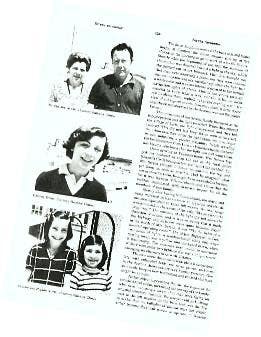Ian Ridpath’s UFO skeptic pages
A Spanish close encounter re-examined
Every UFO researcher knows that the dazzling planet Venus is the single most common culprit in UFO sightings, yet it has still caught out people who should know better. I found the following notable example in The Encyclopedia of UFOs, edited by Ronald Story (1980), where it appears under the heading ‘Serena Encounter’. It is presented as an example of a genuine close encounter of the first kind in which (according to the case investigators) the UFO seemed to exhibit intelligent control and produced electromagnetic and physiological effects. Their report takes up two and half pages of the Encyclopedia, more space than is devoted to such celebrated cases as the Travis Walton abduction and the Tunguska event. Clearly, the researchers rate it very highly indeed. Here I present the solution.
The story
In brief, Mr and Mrs Antonio Serena plus their three daughters were driving home one evening from a visit to friends near Valencia, Spain, when they noticed an intense white light that chased their car along 40 km of road for an hour. After being visible to the right as they drove southwestwards, the UFO then zig-zagged in front of them before it finally descended to an estimated height of 7 or 8 metres and extended landing gear. As the UFO came closer, the car’s lights began to fail, and the engine experience ignition problems after one of the children became violently sick. When another car approached from the opposite direction the UFO moved away, and eventually it disappeared.
This case was investigated by Willy Smith (then professor of physics at Lycoming College, Williamsport, Pennsylvania), in conjunction with two Spanish ufologists, Miguel Guasp, and V. J. Ballester Olmos. The three researchers assigned this case to the ‘high-strangeness’ category. Although it is relatively old, the case is so instructive that it deserves to be better known.
The explanation
By chance, I discovered that the investigators had previously written up the story in more detail in UFO Phenomena vol. 3 no. 1 (1978/79), an annual review of ufology published in Italy. This earlier paper contains an important clue to the identity of the UFO that is not given in the Encyclopedia article. The authors note that on the date of the sighting (1977 February 22) the planet Venus was approaching its maximum brilliancy in the evening sky. Yet they rejected Venus as an explanation on the grounds that it had set at about 9.30 p.m. on that date, whereas the UFO sighting did not begin until about 9.30 and lasted until 10.30.
Reference to a simple planetarium-type computer program confirms that the setting time of Venus at the location of the sighting was indeed about 9.30 p.m. GMT. However Spain, in common with most of western Europe, keeps time one hour ahead of GMT, and the investigators clearly did not take this additional hour into account. Therefore Venus was, after all, visible as the Serenas drove home, and its setting time of 10.30 p.m. matches the time at which the UFO vanished. Indeed, when the light was first sighted at 9.30 Mr Serena told his daughters ‘It is the evening star’ (the popular name for Venus) – confirmation that its initial appearance matched that of Venus and that only one such object was visible.
The ‘chase’ of a car by a bright celestial object is a familiar theme in ufology. A map and photographs of the event given by Smith, Guasp, and Ballester Olmos shows that at the point where the UFO appeared to descend in front of them the Serenas were heading west, towards the direction of setting Venus, and the road was winding, which would cause the planet to appear to zig-zag, as they reported the UFO to do. The UFO stopped moving when Mr Serena pulled up the car for his teenage daughter Carmen to vomit by the roadside. A mixture of travel sickness on the winding road and nervous tension over the UFO seems a plausible explanation for Carmen’s stomach upset.
There does seem to have been something genuinely wrong with the car’s electrical system, for the following day Mr Serena found that his car battery was dry. Smith, Guasp, and Ballester Olmos attribute this to the UFO, for they do not think that Mr Serena, whose job is that of a bus driver and who maintains his car conscientiously, would let his battery run dry. However, that is what must have happened – unless, of course, UFOs are now given to topping up their own batteries from passing cars.
The moral
In short, all aspects of this ‘high strangeness’ case can easily be attributed to prosaic causes. The original failure to solve the case stems from an elementary error in the setting time of Venus. It demonstrates that even the endorsement by three experienced investigators (one a professor of physics) of a close encounter involving electromagnetic and physiological effects is no guarantee that a genuine UFO is involved.
© Ian Ridpath. All rights reserved
Content last revised 2021 January

The Serena family pictured in the Encyclopedia of UFOs edited by Ronald Story (Doubleday, 1980).